
The Lockheed Ventura is a twin-engine medium bomber and patrol bomber of World War II.

The Aero Ae270 Spirit was a single-engine turboprop general utility aircraft that was developed by the Czech aircraft company Aero Vodochody. A prototype made its maiden flight in 2000, with European Aviation Safety Agency (EASA) Type Certification in 2005 and Federal Aviation Administration (FAA) type certification in 2006. No production followed.
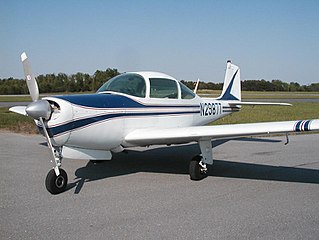
The Meyers 200 is a single-engined light aircraft produced in the United States in the 1950s and 1960s.
The Interceptor 400 was a turboprop-powered single-engined light aircraft developed from the Meyers 200 single-engine piston plane. It attracted buyers but was unable to obtain adequate manufacturing financing, and was perhaps too far ahead of its time. In the late 1960s and early 1970s, at the time of its development, the market for single-engined turboprops was still a decade away.

The Cessna 441 Conquest II is the first turboprop powered aircraft designed by Cessna, and was meant to fill the gap between their jets and piston-engined aircraft. It was developed in November 1974, with the first aircraft delivered in September 1977. It is a pressurized, 8–9 passenger turbine development of the Cessna 404 Titan.
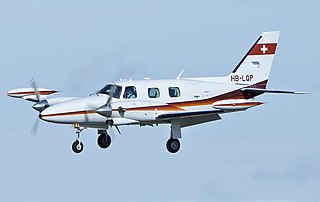
The Piper PA-31T Cheyenne is a turboprop development of the earlier PA-31P Pressurized Navajo.

Boeing XB-55 was a proposed Boeing aircraft designed to be a strategic bomber. The XB-55 was intended to be a replacement for the Boeing B-47 Stratojet in United States Air Force (USAF) service.

The Fuji FA-200 Aero Subaru is a single-engine piston-powered monoplane built by Fuji Heavy Industries of Japan.
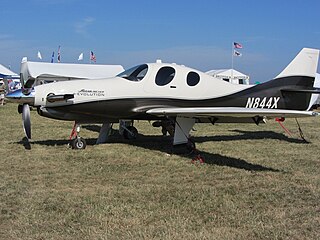
The Lancair Evolution is an American pressurized, low wing, four-place, single engine light aircraft, made from carbon fiber composite, developed by Lancair and supplied as an amateur-built kit by Evolution Aircraft.

The Savoia-Marchetti SM.91 was a two-seat, twin-engined, Italian heavy fighter prototype, designed to compete in a 1942 revision to a long-range fighter-bomber contract offered by the Regia Aeronautica to Italian aircraft companies in 1938. The original 1938 specification yielded the Savoia-Marchetti SM.88, which the SM.91 was largely based on.

The Gulfstream American Hustler was a 1970s American mixed-power executive/utility aircraft designed by American Jet Industries, which later changed to Gulfstream American Corporation. The aircraft had a nose-mounted turboprop and a tail-mounted turbofan.
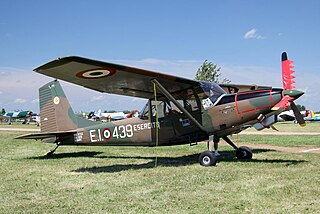
The SIAI-Marchetti SM.1019 is an Italian STOL liaison monoplane built by SIAI-Marchetti for the Italian Army. It is a turboprop-powered derivative of the Cessna O-1 Bird Dog.
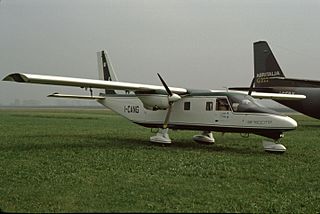
The Vulcanair SF.600 Canguro was a feederliner developed in Italy in the late 1970s. Despite a number of attempts to put the aircraft into series production, only a small number were ever built. The Canguro was a high-wing cantilever monoplane of conventional configuration with a fuselage of rectangular cross-section and a high-set tail. The tricycle undercarriage was not retractable, and its main units were carried on sponsons on the fuselage sides. SIAI Marchetti provided funding towards the construction of the prototype, and constructed this aircraft at the former Aviamilano plant. After flight testing proved positive, the type was put on sale, but failed to attract buyers in any number, even when the original piston engines were exchanged for turboprops and retractable undercarriage was offered as an option.
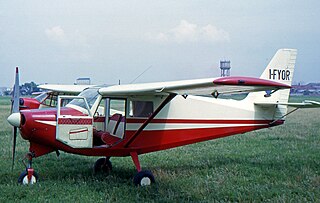
The Partenavia P.57 Fachiro is an Italian, four-seat, high-wing, touring monoplane, fitted with a fixed tricycle undercarriage.
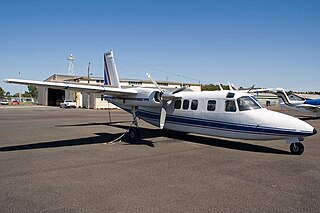
The Rockwell Commander 685 or Aero Commander 685 is a light-twin piston-engined aircraft with a pressurized cabin originally built by the Aero Commander company, a division of Rockwell International from 1965.
The Cameron P-51G is an American two-seat turboprop representation of the 1940s North American P-51 Mustang, designed and built by Cameron & Sons Aircraft of Coeur d'Alene, Idaho for sale as completed aircraft or kits for amateur construction.

The Lockheed L-1249 Super Constellation was a turboprop-powered version of the Lockheed Constellation aircraft family. Built in 1954 and 1955, the aircraft were used as prototypes for possible future military transport aircraft for both the United States Air Force and United States Navy. Both aircraft saw very short lives and the airframes were later used to build L-1049 Super Constellations.
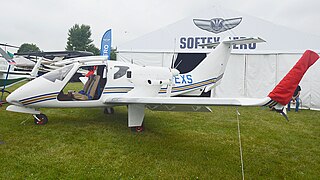
The Softex-Aero V-24 is a proposed five place twin engined aircraft from Ukrainian-based Softex-Aero.
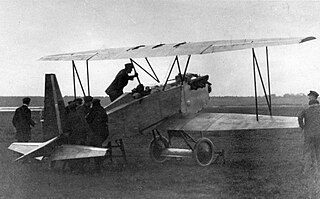
The Caspar CS 14 was a German military aircraft built in the 1920s. At first it was seen as a single seat fighter but was later modified to the reconnaissance role with a second seat.
The Lancair Sentry is an American amateur-built aircraft that was designed and produced by Lancair of Redmond, Oregon, introduced in 2002. The aircraft was supplied as a kit for amateur construction, although it was also intended as a production military trainer aircraft. First flown in September 2001, only two were ever completed.




















